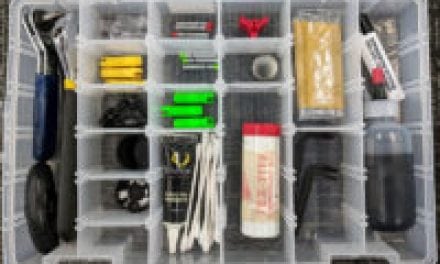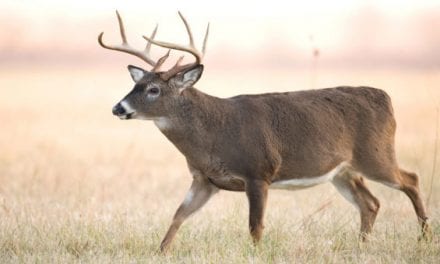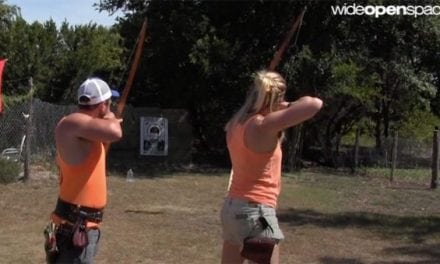As this nifty piece of technology meets outdoors pursuits, the combination of drones and deer hunting are ‘flying under the radar.’
By Darren Warner
As I started to pack up my hunting gear to descend from my tree stand, I was red-hot angry — and bent on finding whoever it was who was flying what looked like a black, metallic bird over my hunting area.
I was so incensed that I nearly dropped my bow before getting it securely attached to my haul rope and lowering it to the ground.
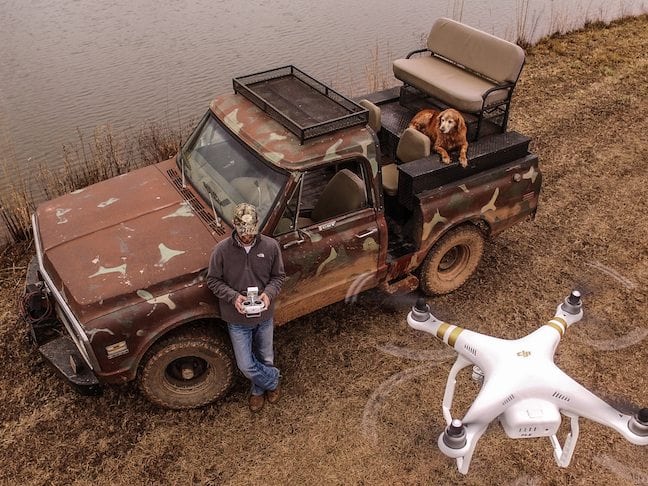
The use of drones has skyrocketed in recent years, with more than 400,000 drones currently registered with the FAA. (Photo courtesy of Blue SkEye Aerial Media)
I cursed repeatedly under my breath, and wondered what would compel someone to destroy the near sanctity of a cool, crisp October morning by flying the object around and around the meadow where I was hunting.
As the airborne contraption pierced the dead-calm morning, it flew over the six deer I had been watching for 15 minutes.
The whitetails, including a decent 8-pointer, barreled out of the meadow like the hounds of hell were hot on their heels. The aircraft flew back and forth for a few more moments, then exited the area, ruining my morning hunt.
I climbed down from my stand and back down on the ground as fast as I could, but the cacophonous contraption was long gone.
I never did find its rude operator, and the experience left me with a bad first impression of a new form of technology that’s sweeping the country.
Drones have arrived
Originally developed for military use, unmanned aerial vehicles, remotely piloted aerial systems, or unmanned aircraft systems all fall under one common name: drones.
If you don’t know someone who owns and operates a drone, you will soon
The nifty piece of technology is the rage among anyone seeking a bird’s-eye-view of whatever lies below.
The unmanned aircraft can carry a camera to capture stunning photos or video of fauna, flora and terra, giving humans breathtaking panoramas and benevolent vistas.
But are the stunning views that drones provide always benevolent? Some say no — not if they’re used by deer hunters to improve their success in the field.
The ethics pertaining to using drones for deer hunting purposes could fill the pages of this and other publications. That’s not our purpose here.
Instead, let’s look at the federal regulations that guide the use of drones, what laws are in place to rein in drone use by hunters, and what deer hunters can and can’t legally do with drones.
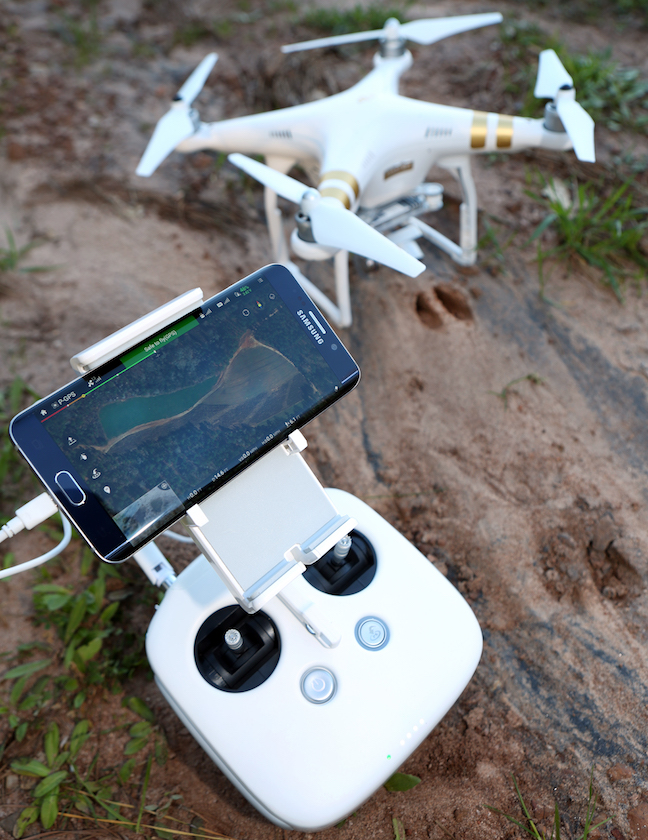
If you don’t know someone who owns and operates a drone, you will soon. (Photo by Ron Sinfelt)
FEDERAL REGULATIONS
Federal regulations governing the use of drones for recreational purposes, which include deer hunting, are minimal and can be boiled down to just a few rules.
Anyone owning and operating an unmanned aircraft weighing .55-55 pounds, which includes nearly all drone operators, must register it with the Federal Aviation Administration.
You must be at least 13 years old and a U.S. citizen or legal permanent resident to register a UAS. Registering costs just $5, and failure to do so will subject drone owners to civil penalties up to $27,000, and/or criminal penalties up to $250,000 in fines, and a maximum of three years in prison.
Go here to register. After registering your drone, you must label your UAS with the registration number. (Editor’s note: At press time legislation was being considered to alter registration regulations.)
- Drones must be operated under 400 feet.
- Drones can be operated only during the daytime.
- Drones must stay within the line of sight of the operator. In other words, if you can’t see your drone, you’re flying it illegally. Also, operators are prohibited from using drones when under the influence of alcohol and/or drugs.
- Drones cannot be flown over groups of people, near other aircraft, over stadiums or sporting events, and near emergency response efforts like fighting wildfires.
- Drones cannot be operated within 5 miles of an airport without first obtaining permission from both the air traffic controller and the airport operator.
The use of drones has skyrocketed in recent years, with more than 400,000 drones currently registered with the FAA. Unfortunately, so too have the number of incidents involving unauthorized and/or unsafe use of remote-controlled aircraft.
Between 2014 and 2015, pilot reports of interactions with unmanned aircraft have increased more than fivefold, with most incidents involving careless and/or reckless operation.
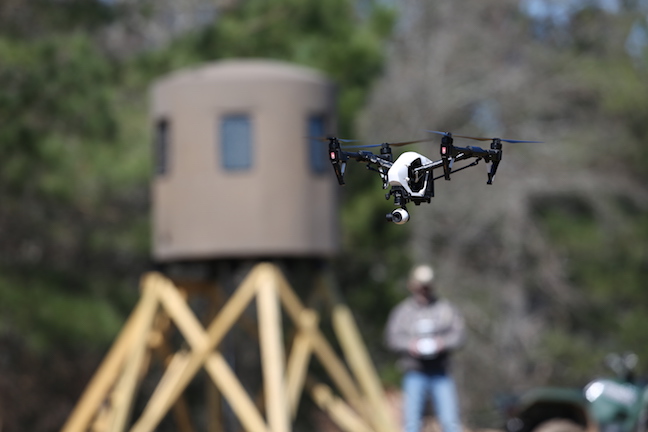
Drones are used for scouting purposes, to locate deer sign, or sight the animals themselves. (Photo by Ron Sinfelt)
“The penalties for careless or reckless operation of drones are severe and are the same as they are for illegally operating any other type of aircraft,” explained Laura Brown, a spokesperson for the FAA.
If you do suspect someone is operating a drone illegally, don’t take the law into your own hands.
“Just as it’s illegal to shoot a helicopter down, you can’t shoot or knock a drone out of the sky,” added Brown.
If you suspect someone is operating an unmanned aircraft illegally, the best course of action is to contact your local law enforcement agency or a Michigan Department of Natural Resources conservation officer.
STATE LAWS
Less than one-third of our states have laws on the books regulating the operation of drones for hunting-related purposes. As the technology behind drones has rapidly progressed, more and more people are getting drones and using them for outdoor pursuits. Unfortunately, many states have struggled to keep a handle on how they’re being used.
“Using drones for hunting has been flying under the radar of many state legislatures,” said Lance Tawney, president and CEO of Backcountry Hunters and Anglers Association. “But like anything, the potential for abuse exists. For example, outfitters are under enormous pressure to help their clients be successful, and non-hunters could use unmanned aircraft to harass hunters.”
To better understand Tawney’s last point, consider this potential scenario. You are working with a deer or elk outfitter to help you fill your tag. The outfitter wants you to be successful.
It’s very tempting to use a drone to find a herd and pinpoint a harvest-worthy animal. Should a hunter use a drone to locate deer or elk?
We’ll consider that question a little later in our discussion.
Alaska, Colorado and Montana were the first states to ban the use of drones for hunting or scouting wild game.
Even if they don’t have a law that specifically addresses the use of drones, many states have a 24- or 48-hour fly/no-hunting law that restricts how soon after flying an individual can hunt. But it’s sometimes unclear if the law covers drone usage.
Illinois is a prime example. The Land of Lincoln has a law on its books that prohibits the use of drones to harass hunters or interfere with hunting and fishing activities, but no regulations that specifically address the use of drones for monitoring, scouting or hunting purposes.
Other states, like Indiana, prohibit the use of drones to scout game during hunting season, but allow hunters to use UAS to find deer and new hunting spots at other times of the year.
When it comes to legislation managing drone operation by hunters and anglers, Michigan has one of the strictest laws of any state in the country. Public Act 13 of 2015 (MCL 324.40111(c)) prohibits the taking of game, including deer, with the use of an unmanned vehicle or unmanned device that uses aerodynamic forces to achieve flight.
Hunters need to keep in mind that “taking” is broadly defined and includes hunting, killing, chasing, harassing, harming, pursuing, shooting, trapping, capturing or collecting. What’s more, hunters are under the same restrictions for operating drones when it’s not deer season.
“The law doesn’t differentiate the use of drones during certain times of the year,” said Captain Terry Robson, a CO for the Michigan DNR. “So using drones to pursue wildlife is just as illegal during hunting season as it is for the rest of the year.”
All of this doesn’t mean hunters are prohibited from using drones for all hunting-related purposes. For example, flying a drone over an area when deer aren’t in season to find a new hunting spot is legal, as long as the operator isn’t harassing wildlife. But whether a UAS is being used to harass wildlife is in the eye of the beholder … er…the CO.
“If someone calls us and reports that a drone is being used to harass deer, we will investigate the complaint to see if it’s valid,” explained Robson. “One thing we will do is ask the operator if we can view the video they’ve taken with their drone. If they refuse, then we will obtain a search warrant to legally view the video to make a determination on whether the operator is violating the law.”
How does a CO make the determination that a drone is harassing deer? While the decision has no clear objective parameters, one surefire sign that a drone is bothering whitetails is if they’re observed running off or otherwise trying to avoid the drone.
Taking flight to escape from the sound and/or sight of a drone is a good indication that deer are frightened by the UAS, and that the operator is using their UAS illegally.
In Michigan, hunters aren’t the only ones who can’t use drones for harassment purposes. The Great Lakes State explicitly prohibits the use of drones to obstruct or interfere with the lawful “taking” of animals or fish, thus protecting hunters’ rights.
Anyone found guilty of violating MCL 324.40112 is subject to a fine of up to $500 and up to 90 days in jail. A hunter who believes a drone is being used to harass them should contact their local CO or sheriff’s department.
Harassing Deer?
For hunters who think that all this talk about drones harassing deer is much ado about nothing, go to YouTube and do a search for videos on drones and animals. You’ll find a plethora of videos documenting just about every animal under the sun being hounded by a pesky drone — all for questionable entertainment value.
In one video, an individual can be heard encouraging the drone operator to “not lose that buck,” laughing hysterically when the deer nearly falls jumping over a ditch to avoid the drone. Again, if you think you’ve witnessed someone using a drone illegally, contact local law enforcement.
Regardless of whether you believe it’s ethical to employ drones to find a new hunting hotspot or to find deer sign after hunting season has closed, make sure you follow all federal and Michigan laws governing the use of UAS where you hunt.
And don’t forget to check with the local municipality where you hunt to make sure they haven’t enacted additional drone restrictions. Just as it’s your responsibility to know the legal shooting hours for the day you’re deer hunting, it’s up to you to follow all applicable federal, state and local regulations.
If you’re not sure if how you plan to use a drone is legal, ask a CO before flying. Finally, just as it’s your responsibility always to operate drones legally and safely, it’s also your responsibility to report potential misuses of drones to law enforcement.
The post Do Drones and Deer Hunting Mix? appeared first on Game & Fish.












